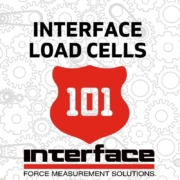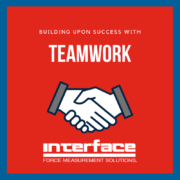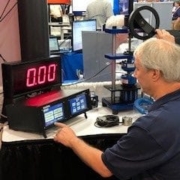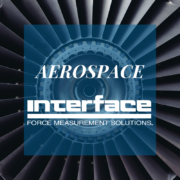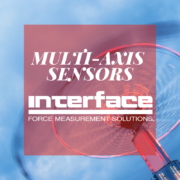The Marvels of Interface Mini Load Cells
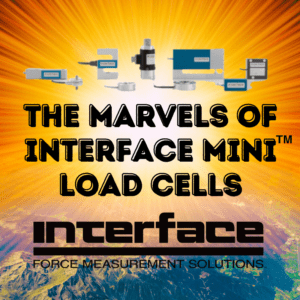 With the miniaturization and compact size of many products and technologies used today, sensors need to be designed to fit all types of applications, both big and small. This is especially true in the medical, aerospace, industrial automation, and automotive industries.
With the miniaturization and compact size of many products and technologies used today, sensors need to be designed to fit all types of applications, both big and small. This is especially true in the medical, aerospace, industrial automation, and automotive industries.
Interface, a pioneer in the field, recognizes the need for miniature load cells and offers a wide range to meet these requirements. In fact, Interface revolutionized the industry with our first miniature S-Type SM and SSM Load Cell in 1974. Our latest innovation, the SuperSC, entered the market in 2022. More miniature products are in development today.
Miniature load cells are engineered for use in applications that require a light touch, are lightweight, or require less space. They are not just small in physical size; they also have a range to test minimal forces with extremely high accuracy.
Interface defines our trademarked Mini™ Load Cells as anything that isn’t a low-profile load cell. What sets our miniature line of load cells apart is their versatility. They start with capacities as low as 0.02 lbf (.1N) in our ULC Ultra Low Capacity model and go up to 50,000 lbf (220 kN) in our REC Rod End Load Cell and LBM Compression Load Button Load Cell series. This wide range makes them perfect for various applications demanding small sizes and high precision.
Our Miniature Load Cells provide exceedingly accurate measurements, comparable to those of our full-size load cells, thanks to our proven designs and proprietary alloy strain gages. Miniature load cells are also generally less expensive than larger load cells, making them a cost-effective solution for applications that require precise measurements in a small form factor. Visit: Mini Load Cell Selection Guide
Where are Interface Mini Load Cells Used?
Interface Mini Load Cells are the epitome of versatility, used across a vast array of industries, as showcased in our Mini Application Notes, from biomass handling machines to satellite deployment gear. Here are some additional use case highlights.
Medical Devices: Prosthetics are made without any electronic components and are simply created with a limited range of motion. Using a force sensor and an electric motor, Interface sensors create an actuated limb that provides force feedback and tells the prosthetic joint to move based on data. This functionality greatly enhances the overall mobility of the limb and provides the device user with more capabilities. Additional use cases in medical and healthcare include measuring the grip strength of surgical devices, force measurement in surgical robotics, and testing of catheters and other medical instruments.
Aerospace: Assembly machines and tools benefit by using Interface Minis to ensure the exact amount of force and torque is applied in use. Aircraft manufacturing operations control the torque when fastening screws on different model components. It is critical to not damage materials or apply too much torque when plane components are being fastened together. Other aerospace use case examples include monitoring wing stress on drones, measuring forces of landing gear components, and load testing for different parts.
Industrial Automation: An automated production line includes force sensors on different machines to track pressing force and torque measurement data to identify abnormalities in manufacturing on the line. The data is helpful for signaling if a repair is required or if there is a safety risk. The active part of the system uses sensor-based components to act autonomously when the data tells it to, rather than needing human intervention. Additional industrial use cases for minis include production tool automation, machine retrofitting, conveyor belt monitoring, and cobot systems.
Automotive: Automotive manufacturers test every component and part to ensure the safety and durability of the vehicle. They can use a force testing system for their vehicle power windows, using Interface’s SML Low Height S-Type Load Cell and our LB Load Buttons to measure the forces. Testing the strength of the pinch force of their power windows can prevent injuries or other safety concerns. Additional automotive industry use cases include seatbelt tension measurement systems, force sensing in pedal applications, and vibration analysis in small engines.
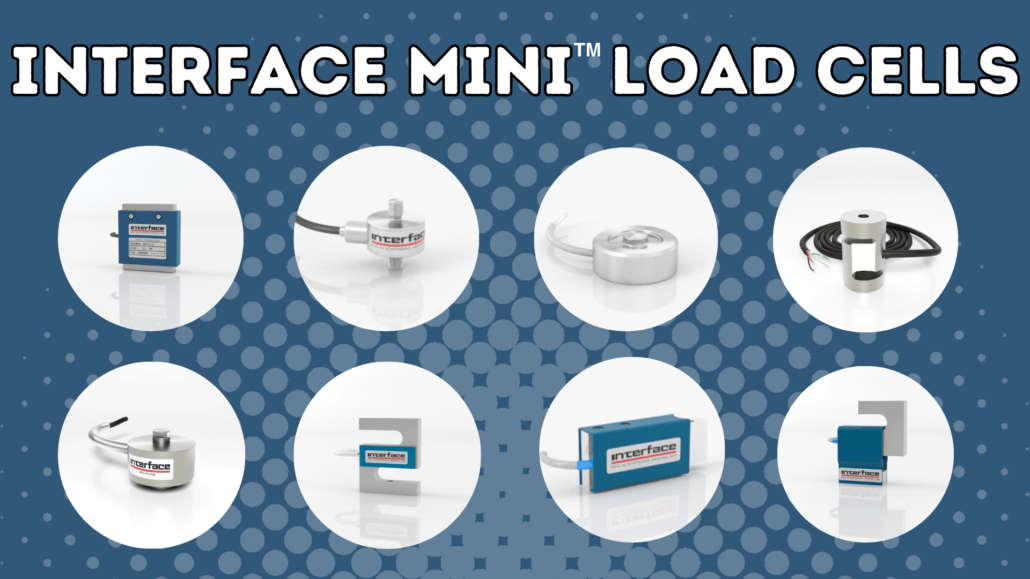 Interface Mini Load Cell Options
Interface Mini Load Cell Options
Standard Mini Classifications of Product Family
- Miniature beam load cell
- Miniature load button load cells: Ideal for confined spaces, offering high accuracy in a small footprint.
- Miniature load washers
- Miniature tension and compression, compression only load cells
- S-type load cells
- Miniature sealed stainless steel load cells
- Column rod end miniature load cells
- Torque transducer miniatures
Specialized Classifications of Minis
- Submersible minis
- Overload protected minis
- Fatigue-rated minis
- Single point minis
- Sealed minis
- Pedal design
- Parallelogram load cells
- Pillow block load cells
Many Interface Mini Load Cells are suitable for off-the-shelf applications. However, Interface also offers custom design services to create load cells that perfectly match your specific size, weight, and accuracy requirements. One key benefit of customization is that OEMs can use miniature load cells to activate components.
Top Reasons to Use Mini Load Cells to Activate Components
REASON #1: Turning an active component into a sensor means that we can include a miniature-sized transducer inline to track data and perform actions based on it.
REASON #2: Utilizing sensor-based data makes manufacturers, products, and processes smarter.
REASON #3: Decisions from sensors in components can prevent error, injury, and production line mishaps.
REASON #4: Demand for more data and measurement in real-time is on the rise.
For more information on Interface’s Mini Load Cells, visit our Mini Load Cell Selection Guide. To learn about activating components using our miniature load cells, go to Building Synergy to Accurately Measure OEM Products and Components.
Interface Mini Brochure Pages